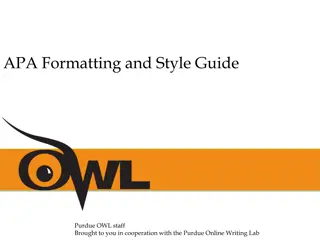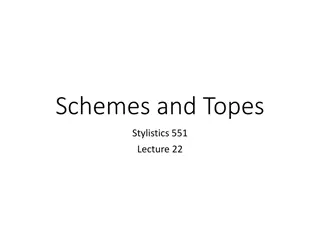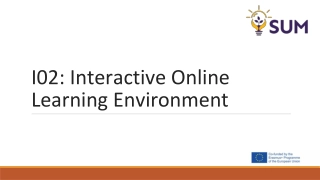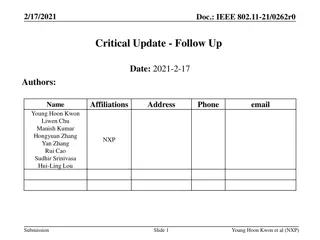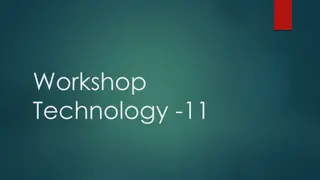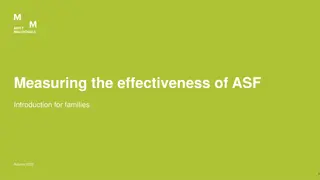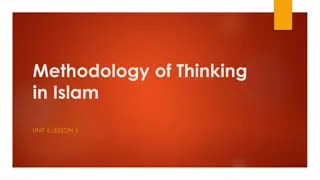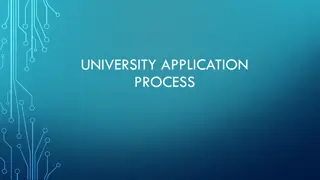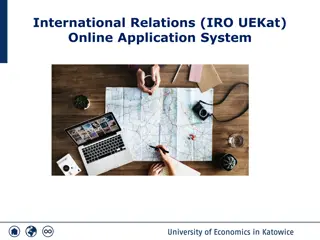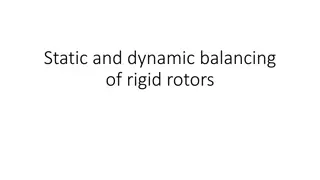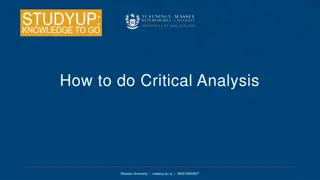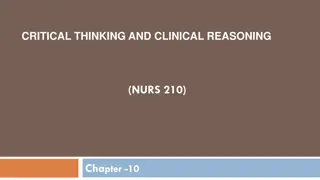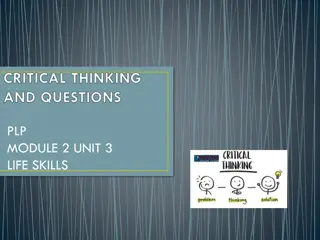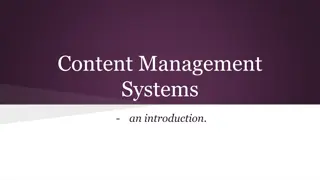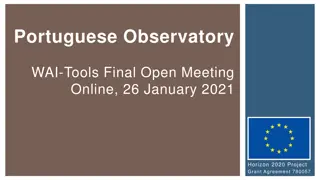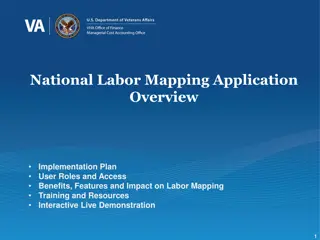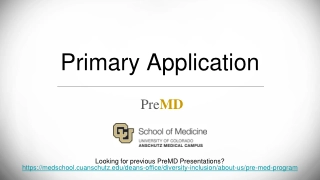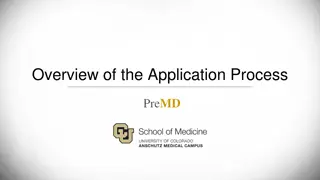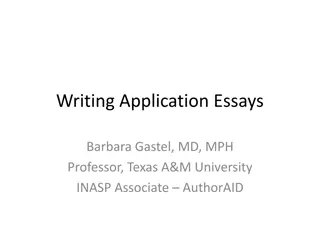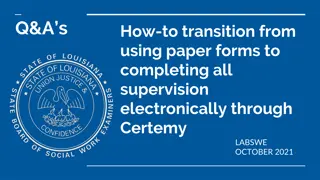Understanding Critical Stylistics: Tools and Application
Critical Stylistics (CS) is a method that delves into the ideological underpinnings of texts through the analysis of linguistic features. Developed by Jeffries, CS focuses on uncovering implicit ideologies embedded in texts by examining stylistic choices. By integrating stylistics and critical discourse analysis (CDA), CS offers a framework for analyzing texts and making recipients conscious of underlying ideologies.
Download Presentation

Please find below an Image/Link to download the presentation.
The content on the website is provided AS IS for your information and personal use only. It may not be sold, licensed, or shared on other websites without obtaining consent from the author. Download presentation by click this link. If you encounter any issues during the download, it is possible that the publisher has removed the file from their server.
E N D
Presentation Transcript
Critical Stylistics (CS) Power point presentation prepared by Mushtaq Abdullah Jameel PhD Candidate/ Dept. of Translation
Outline: Why CS? The development of CS How to Apply CS? The Tools of CS (10 Tools) Naming and describing Representing actions/events/states: Equating and contrasting Exemplifying and enumerating Prioritising Implying and assuming Negating: Hypothesising Presenting others speech and thoughts Representing time, space and society References
Why CS? As Toolan (1997) maintains that there is a need for critical discourse analysts to be more critical and demanding of their linguistic tools used in the analysis as well as providing strong and clear evidence for the claims they make. To overcome the lack of methodological rigour and to compensate for the lack of coherent analytical devices that previous CDA theories and its forerunner Critical Linguistics have been criticized for.
The Development of CS Jeffries developed Critical Stylistics Critical Stylistics: The Power of English (2010) She aims to give the reader a clear set of analytical tools to follow in carrying out critical analysis of texts, with the aim of uncovering or discovering the underlying ideologies of the texts (ibid: p6) CS concerns the textual meaning, which is the core of stylistics. Textual meaning is encoded by the stylistic choice of linguistic features that are embedded in a text. For her, this choice is always ideologically loaded and may also be ideologically manipulative (Jeffries, 2010, p. 3) She developed CS by relying on Halliday s suggestion that a language consists of a network of linguistic options that enable users to communicate a particular meaning.
It is worth mentioning here, the list provided by Jeffries is not brand-new, but a collection of tools employed by Fairclough (1989), and critical linguists Fowler (1991) and Simpson (1993). Jeffries is concerned with the stylistic choices and textual analysis which are made by a text producer whether intentionally or not. Such a text conveys particular ideologies that influence the text recipient. The aim of using critical stylistics tools is to make the text recipient conscious of these ideologies, whether they alter their viewpoints or not. The textual meaning is the core of critical stylistics as it is in the mid-way between language structures and language system and the contextual influences and individual responses of the situation.
How to Apply CS? In order to reveal the underlying meaning of a text using linguistic features, Jeffries offers a Critical Stylistic framework that combines the text analysis of stylistics with the ideological awareness of CDA. CS integrates stylistics and CDA to critically analyse texts.
CS Conceptual Tools Inspired by Fairclough s CDA model and adopting mostly from Halliday s systemic functional view of language (1985), CS offers a list of ten textual- conceptual functions based on the ideational function that is concerned with how language represents the world. They are recognised as a combination of textual features (triggers) and the ideational functions. They have either a prototypical form or a set of more or less peripheral forms which carry the conceptual effect, though sometimes not consistently or not so obviously. The tools represent a collection of previous tools used by critical discourse analyst Fairclough (1989), and critical linguists Fowler (1991) and Simpson (1993) along with a new suggested tools by her like transitivity and modality.
However, this toolkit differs from the previous CDA and Critical Linguistic tools in that the tools are presented in the form of a list of functions that may be represented by more than one linguistic feature. The reason behind this is to overcome the lack of form- function mapping as in CDA and its forerunner Critical Linguistics.
CS Tools Naming and describing: how language is used to name referent in an ideological way. This textual function is linguistically realised by the selection of a particular ideological nominal reference from a range of alternative options, packaging up certain ideological content inside the noun phrase, and turning the elements of a proposition into a nominal. For instance, the UK press used three different naming choices to name the Libyan leader, Muammar Gaddafi. He has been named formally as Colonel Muammar Gaddafi or the Libyan leader. In some cases, they referred to him using his actual name Gaddafi but stripped of his presidential title. In addition, the UK press selected particular ideologically loaded lexical items to label Muammar Gaddafi in a negative way, such as autocrat, tyrant, and despot.
The other way of naming is by using noun phrasing which is considered by Jeffries as the basic unit of naming practices by packaging up certain ideological content inside the noun phrase. The head of a brutal regime that killed, stole and imprisoned at will, assassinating dissidents wherever they were, Gaddafi was nevertheless seen as a comic book dictator: the absurd robes, Ruritanian uniforms, reflective sunglasses, Amazonian bodyguards and ludicrous utterances. The head noun regime names the Gaddafi government, which itself reflects the writer s negative stance toward the Gaddafi government as this nominal choice generally has a negative semantic prosody. This strategy has been considered by Jeffries as a kind of syntactic transformation used to create a structure for ideological prioritization.
Representing actions/events/states: is based on the choice of the verb in a clause to describe the situation either as an action, an event or a state. Each of these choices can have an ideological effect according to how the recipients perceive the situation being presented. It is concerned with how the textual (ideational) meaning is expressed in the clause. It is the meaning that is related to what is being done (actions), what is happening (events), or what simply is (states) . the choice of the verb in a clause used to describe the situation either as an action, an event or a state is the central aspect of this function. Each of these choices can have an ideological effect according to how the recipients perceive the situation being presented. This function is based on Simpson s transitivity model (1993), which has its theoretical roots in Halliday s Systemic Functional Grammar (SFG) (1994). Transitivity model, for Jeffries based on Simpson s idea, is suitable since it brings together the fields of Stylistics and CDA to detect ideology in text. Transitivity, in this sense, is concerned with the ideational function, that which investigates how language is used to represent the experiential meaning, the representation of what is going on in the world.
Example: Libyan rebel forces launched offensives against Gaddafi loyalists yesterday. The kind of process in the above clause is a material action process expressed by the transitive verb launched, in which Libyan rebel forces are the actor, while Gaddafi loyalists is the goal (affected participant) of the launched action. The material action verbs are further divided into two types according to the type of actor performing the action: Material Action Intention (MAI), in which the doer of the action is animate, and Material Action Events (MAE), which are done by an inanimate actor.
- Yesterday, Gaddafis forces bombed the rebel frontline in the east, at Ras Lanuf. The material action verb bombed is MAI as Gaddafi s forces is an animate actor, while Libyan air force jets - Libyan air force jets bombed the rebel-held city of Ajdabiya, 160 kilometers south of Benghazi. An inanimate object occupying the role of the actor categorising the material action verb bombed as MAE
Another category of transitivity processes is a mental process which is further divided into Mental Cognition (MC), Mental Perception (MP) and Mental Reaction (MR) processes Example: Daniel Howden sees the regime turn to guerrilla warfare in Jalo. The mental process in the clause above is expressed by the verb sees, constructing the Perception Mental process (PM). In this process, Daniel Howden is presented as a Senser of the seeing process, while the phrase the regime turn to guerrilla warfare in Jalo is the Phenomenon. The last category of transitivity processes is the Relational process, which illustrates the existence of a relationship between two participants (Carrier and Attributes). This Relational process could be identified as an intensive relation process (RI), possessive relations (PR) or circumstantial relations (RC) Gaddafi is an international terrorist on a grand scale and his crimes are legion. RI Gaddafi has tanks and trucks with missiles. RP France was in the forefront to strike Gaddafi s forces and prevent a massacre in Benghazi. RC
Equating and contrasting: is interested in how texts use the textual construction of equivalence and opposition to represent the world. Jeffries (2010) argues that the construction of certain synonyms or antonyms to construct a text around the world can produce an ideological effect. In other words, how texts use the textual construction of equivalence and opposition to represent the world. For her there is a possibility for words to be semantically similar or semantically opposed in texts, which can create some kind of equivalence and opposition relations between concepts which are not normally treated as synonymous or as opposites. There are three syntactic triggers that create textual equivalence relations within a text, including a noun phrase apposition, parallel structure, and an intensive relational transitivity pattern, while there are eight types of opposition triggers: negated opposition, transitional opposition, comparative opposition, replacive opposition, concessive opposition, explicit opposition, parallelism, and contrastives.
Example: So ended the career of Muammar Mohammed Abu Minyar Gaddafi, mercurial leader of Libya, patron of international terrorism, desert mystic, narcissist, figure of fun, one-time great survivor, Ronald Reagan's mad dog. [X, Y, (Z)]. There is an appositional equivalence which is triggered by the juxtaposition of nine noun phrases without co- ordination. These NPs occupy the same syntactic role, thus referring to the same referent Col. Muammar Gaddafi offered an amnesty to Libyan rebels yesterday, but threatened a bloodbath if the West tried to intervene in his fight to stay in power. [ X, but Y] It constructs opposition relations between the positive action offered an amnesty and the violent verbal action threatened a bloodbath, which has been triggered by the co-ordinating conjunction but. These are not conventional opposites, but the semantic opposition relation between them relies on the syntactic frames X but Y.
Exemplifying and enumerating: give consideration to the potential ideological consequences that result from using the textual functions of exemplifying and enumerating by means of listing structures in the text. They give consideration to the potential ideological consequences that result from using the textual functions of exemplifying and enumerating in the text. These two functions are not part of CDA, they were added by Jeffries as they could provide semantic relations textually. Political speakers use three-part statements in order to build a strong argument for their claims and to establish particular ideologies for the listener.
Example: Cameron said : Six months ago , this country took the difficult decision to commit our military to support the people of Libya . I said at the time that this action was necessary , legal and right I still believe that today . In the above example , Prime Minister Cameron talked about how it was necessary to take military action against the Libyan regime .He described the action taken in the form of a three-part list : necessary , legal and right .The word necessary to initiate his argument, legal to emphasize legal, and right to reinforce both necessary and legal.
Prioristing: it is concerned with how ideological effects can be created by changing the position of the focal information in the sentence through using syntactic possibilities for prioristing, including exploiting information structure, transformation and subordination. Its about making particular information salient or making other information less salient through these syntactic possibilities can produce an ideological effect in a text - It was a weapon of mass destruction that Col. Gaddafi is willing to train on his own people . Here the text producer prioritises the existence of weapons by using a cleft sentence and placed it at the beginning of the sentence .
The ideological effect of prioritising could also occur as a result of the structural subordination options. This means that placing information at a low level of subordination in a sentence makes it less susceptible to debate or question. Example: David Cameron and other Western leaders were on the brink of ordering military action against Col. Muammar Gaddafi last night amid fears that the Libyan dictator could use chemical weapons against his own people. This is an example when the writer used this syntactic process for creating a structure for ideological prioritisation in representing Gaddafi s violent acts
Implying and assuming : to use assumptions and implications to produce naturalized ideologies which can not be questioned as they are represented as common knowledge . The ideological effect of the implicit meaning is related to two concepts: presupposition and implicature, which have their theoretical roots in semantics and pragmatics respectively. While Presupposition concerns building an assumption into the text while implicature aims to imply pragmatic meanings within a text. The Gaddafi regime continued to use its air force against the opposition yesterday . The iterative verb continued logically presupposes that the use of the air force by the Gaddafi regime against his the opposition was not for the first time .Also the possessive pronoun its presupposes the existence of air force as facts that cannot be denied by the reader .
Presenting Others Speech and Thought: This textual conceptual function gives consideration to how speaker/ writer uses power of language as Jeffries describe it potentially very manipulative of their ideologies as well as those of the reader . Depending on Leech and Short s model (1981; 2007) of speech representation, there are five choices available to represent the speech of others: narrator s report of speech (NRS), narrator s report of speech act (NRSA), free indirect speech (FIS), indirect speech (IS), and direct speech (DS).
1. Farida , a lawyer , said : I was sorry that his life ended so easily . He should have been brought to justice and faced the families who suffered 2. NATO said yesterday that about 200,000 Libyan civilians were still threatened by Gaddafi loyalists , mainly in Sirte and Bani Walid . In example ( 1 ) , the writer quotes directly the actual utterance of the Libyan lawyer , Farida , in which her voice and her opinion are represented in relation to Gaddafi s end and the suffering of the Libyan families . Where as in in (2) the writer uses indirect speech to reword the utterances of NATO regarding the situation in Libya. As stated above, the use of IS enables the journalist to encode his point of view by manipulation. Linguistically, the journalist s opinion is expressed through syntactic and lexical choices.
Negating : This textual practice is based on the pragmatic force of negating which makes the reader / hearer aware of scenario that are not taking place , but presumably might have done in other circumstances. In other words, create an alternative reality which is considered to be unreal. Nevertheless, the text recipient will conceptualize this hypothetical worldview as it has a kind of persuasive power. The process of negation is realized by a set of triggers, as shown in the list below: 1-Syntactically by adding the negative particle to the verb phrase either to the auxiliary or the dummy auxiliary verb. If there is not an auxiliary, the negative particle can be added to the dummy auxiliary do. 2-Another way of negating is through the use of pronouns such as 'nobody,' 'no one,' 'nothing,' 'none' etc. or by using the adjectival no to modify the noun such as 'nobody . 3-Lexically through the semantics of certain words having negative connotations in the openended list that consists of nouns (lack, absence), verbs (exclude, omit, reject), adjectives (absent, scarce), adverbs (rarely, seldom) 4-Morphologically like the following negated adjectives irrational, unprofessional, or the negative verbs like 'disconnect,' 'disrespect.'
Hypothesising : This textual function shows how a hypothetical situation can be created through modality that reflects explicitly the text producer s point of view. It is a tool that refers to the process by which the text producers do not always providing the view of the world as it is. On the contrary, they sometimes provide their own view of the world by creating a hypothetical reality. For this textual tool,Jeffries adopts Simpson's model of modality (1993) which comprises the use of modal auxiliary verbs such as 'will,' 'would,' 'shall,' 'should,' 'can,' 'could,' 'may,' 'might,' 'must,' 'ought,' 'dare,' and 'need.' Each of these modal auxiliaries has a modal meaning or several meanings. The first modal meaning is epistemic (likelihood), which indicates the speaker's doubt or certainty. The second modal meaning includes either the expression of obligation known as a deontic modality or the expression of desirability known as a boulomaic modality.
Space, time and social presentation This tool of analysis deals with how the text producers construct the world in space, time and society dimensions, and these are known as ''text world theory''. To access such dimensions, Jeffries relies on the model of deixis. The importance of deixis lies in the information that it yields a particular interpretation of a particular utterance in a particular contexts of a situation, on the contrary, the lack of this information yields misinterpretation. The English language has the following main categories of deictic expressions: 1-Place deictic: which is expressed by the use of adverbs such as here and there; demonstrative such as this, that, those, and these; prepositional structures such as in front of, opposite to, etc. 2-Time deictic: which is expressed by adverbs now and then, verb tenses, demonstrative, adverbials later, earlier, etc. 3-Personal deictic: which is expressed by personal pronouns first person, second person, and third persons. 4-Social deictic which includes Mr., Dr., etc.
References: Abdul-Majeed, R.K. (2016). Taboo Words vs. Social Deixis: A Sociolinguitic Analysis of La Justice or The Cock that Crew: A Play from the Theatre of Ridiculous. Journal of College of Education for Women, 27(1), 400-414. Retrieved from https://www.iasj.net/iasj?func=issues&jld=15&uiLanguage=ar Fairclough, N. (1989). Language and Power. London: Longman. Jeffries, L. (2010). Critical Stylistics: The Power of English. Basingstoke: Palgrave Macmillan. Jeffries, L. (2015). Textual Meaning and Its Place in a Theory of Language. In Topics in Linguistics, 15(1). Retrieved from http://eprints.hud.ac.uk/id/eprint/30099/1/%255BTopics%in%2520Linguistics%255D%2520Text ual%2520meaning%2520and%2520place%2520in%a%2520theory%2520of%2520language.pdf Simpson, P. (1993). Language, Ideology and Point of View. London: Routledge.







